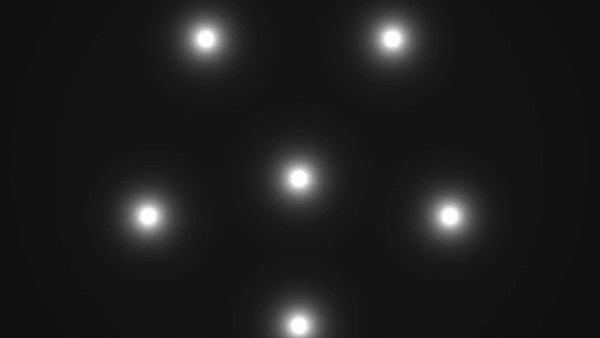Why Jupiter’s storms behave so strangely
At the south pole of Jupiter there is an impressive sight – even for a gas giant covered with colored bands, which carries a red spot larger than the earth. Near its south pole, a cluster of swirling storms has formed, arranged in a geometric pattern. Since they were first sighted by the NASA space probe Juno in 2019, the storms have puzzled scientists. Basically, they resemble hurricanes on Earth. However, storms on our planet do not gather at the poles and swirl around each other as a pentagon or hexagon.
Now a research team in the laboratory of Andy Ingersoll, Caltech Professor of Planetary Research, has discovered why Jupiter’s storms behave so strangely. They used formulas derived from a proof written almost 150 years ago by Lord Kelvin, a British mathematical physicist and engineer. Ingersoll, who was a member of the Juno team, says that Jupiter’s storms are remarkably similar to those that strike the east coast of the United States every summer and fall, only they are much larger.
“If you go below the cloud tops, you’ll probably find liquid water drops, hail and snow,” he says. “Hurricanes on Earth are a good analogy to the individual eddies within these arrangements we see on Jupiter, but there is nothing so overwhelmingly beautiful here”.
As on Earth, Jupiter’s storms form closer to the equator and then drift towards the poles. However, Earth storms dissolve before they move too far away from the equator. Jupiter’s storms simply continue to drift until they reach the poles.
“The difference is that hurricanes have no warm water on Earth after leaving the equator because they hit continents,” says Ingersoll. Jupiter has no land, “so there is much less friction because there is nothing to rub against. There’s just more gas under the clouds. In addition, Jupiter has heat left over from the time it was formed, which is comparable to the heat it receives from the sun, so the difference in temperature between its equator and its poles is not as great as on Earth”.
This explanation, according to Ingersoll, still does not explain the behavior of the storms, however, as soon as they reach the south pole of Jupiter, which is unusual even compared with other gas giants. Saturn, also a gas giant, has a massive storm at each of its poles, rather than a geometrically ordered cluster of storms.
The answer to the mystery of why Jupiter has these geometric formations and other planets do not, as Ingersoll and his colleagues discovered, was found by researchers in the past, especially in the work done in 1878 by Alfred Mayer, an American physicist and Lord Kelvin. Mayer had placed floating circular magnets in a pool of water and observed that they would spontaneously arrange themselves into geometric configurations similar to those seen on Jupiter, with shapes depending on the number of magnets. Kelvin used Mayer’s observations to develop a mathematical model to explain the behavior of the magnets.
“Back then, people thought about how rotating fluid particles would arrange themselves into polygons,” says Ingersoll. “Although there have been many laboratory studies of these liquid polygons, no one thought to apply this to a planetary surface. To that end, the research team used a series of equations known as shallow water equations to create a computer model of what might happen on Jupiter and began running simulations.
“We wanted to study the combination of parameters that would make these hurricanes stable,” says Cheng Li, lead author and fellow at UC Berkeley. “There are established theories predicting that cyclones tend to fuse due to the rotation of the planet at the pole, and we found these in the first experimental runs. Eventually, however, the team found that a Jupiter-like stable geometric arrangement of storms would form if the storms were each surrounded by a ring of winds rotating in the opposite direction to the spinning storms, a so-called anti-cyclonic ring. The presence of anticyclonic rings causes the storms to repel each other and not merge.
According to Ingersoll, the research could help scientists better understand how the Earth’s weather behaves. “Other planets offer a much wider range of behavior than what you see on Earth,” he says, “so study the weather on other planets to test your theories about Earth.


